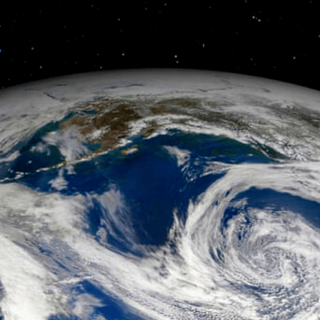Cyclone Tauktae, an “extremely severe” tropical stormraged across Mumbai yesterday, killing about 10 people and injuring nine, before making landfall along the west coast. There are direct links between the growing intensity of cyclones and climate change, experts say.
Initially expected to be a “severe cyclone,” the storm escalated quickly — becoming the fifth-strongest cyclone on record in the Arabian Sea. “Tauktae intensified very rapidly this morning. We did not state that it would intensify to an ‘extremely severe cyclone’ in our forecast. But it did because of extremely favorable oceanic and atmospheric conditions,” Mrutyunjay Mohapatra, director-general of the India Meteorological Department, told Hindustan Times.
The pattern is noticeable among other natural disasters too. Recent cyclones like Amphan, which hit parts of West Bengal and Odisha last year, causing catastrophic damage — as well as Cyclones Ockhi and Fani from 2017 and 2019 — intensified rapidly from a weak cyclonic storm to an “extremely severe cyclone.” The escalation influences disaster preparedness and relief efforts. “That gives us less time to be prepared,” Roxy Koll, a climate scientist at the Indian Institute of Tropical Meteorology, told Hindustan Times.
A study by Climate Trends, a Delhi-based climate agency, establishes a direct link between climate change and severe cyclonic storms like Tauktae. Tropical storms are known to originate over a warm sea surface — which is why tropical storms are common over the Bay of Bengal in comparison to the Arabian Sea.
Related on The Swaddle:
Cyclone Amphan Cost India $14 Billion in Damages: UN Report
But climate change and its impact on global temperature have raised the sea level temperature of the Arabian Sea — impacting the intensity and frequency of storms. “Sea surface temperatures in [the] Arabian Sea have increased rapidly during the past century and this has led to an increase in the frequency and intensity of cyclones in the Arabian Sea… this will be the fourth consecutive year of a pre-monsoon cyclone [there],” Koll added, emphasizing how “global warming has presented us with new challenges.”
“[The] Arabian Sea used to be cool, but now it’s a warm pool — supporting more intense cyclones,” Koll tweeted, explaining that tropical cyclones are more likely to intensify when the surface temperature of a sea is 28°C or more. In fact, when Cyclone Tauktae hit, the surface temperature of the Arabian Sea was above 30°C. “Heat is energy, and cyclones intensify rapidly by turning the potential energy stored in the ocean to kinetic energy,” Koll had told Mint Lounge last year.
“Tauktae passed only 140 kilometers west-southwest of Mumbai… A direct hit clearly could have been catastrophic,” Jeff Masters, a hurricane scientist, wrote in Yale Climate Connections yesterday.
The study, the opinions from experts, and the damage in the wake of Cyclone Tauktae, reiterate the physical manifestation of climate change. Global warming is slated to chart an upward trend in the coming year — especially as industrial carbon emissions continue to rebound to pre-pandemic levels after a brief respite last year. Past research has also underscored the connection between climate change and extreme weather conditions — all of which urge leaders and people to be more mindful of the climate crisis.
If left unchecked, tropical cyclones like Tauktae are about to get more intense in the coming years — and cause more human and economic devastation.




